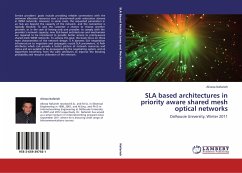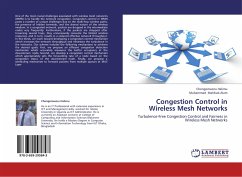
SLA based architectures in priority aware shared mesh optical networks
Dalhousie University, Winter 2011
Versandkostenfrei!
Versandfertig in 6-10 Tagen
47,99 €
inkl. MwSt.

PAYBACK Punkte
24 °P sammeln!
Service providers' goals include providing reliable connections with the minimum allocated resources over a shared-mesh path restoration scheme in WDM networks. However, in some cases, the requested parameters in an SLA are beyond the capacity of the network, and the connection is typically blocked. To give the customer a chance to choose another provider, or in the case of having only one provider, to comply with the provider's network capacity, new SLA-based architectures and mechanisms are required to be introduced to provide better service to prioity-aware shared mesh WDM networks. To achi...
Service providers' goals include providing reliable connections with the minimum allocated resources over a shared-mesh path restoration scheme in WDM networks. However, in some cases, the requested parameters in an SLA are beyond the capacity of the network, and the connection is typically blocked. To give the customer a chance to choose another provider, or in the case of having only one provider, to comply with the provider's network capacity, new SLA-based architectures and mechanisms are required to be introduced to provide better service to prioity-aware shared mesh WDM networks. To achieve this goal, the book focus on three main characteristics of the network design: i) A dynamic SLA negotiation infrastructure to negotiate and propagate crucial SLA parameters, ii) Path attributes which can provide a better picture of network resources and status and are suitable to be propagated by the negotiating system, and iii) Algorithms benefiting from the path attributes to improve the blocking probability and resource utilization of the network.












